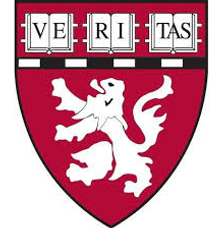
"An unnamed couple, believed to be in their late 20s or early 30s, are due to start treatment at the private Care At The Park Hospital in Nottingham soon to create the test-tube baby.Bosses at their local NHS Primary Care Trust - which holds the purse-strings on health service budgets - have agreed to fund one attempt.This will cost around £4,000, but experts say four to five attempts could be needed to ensure they get a baby who is a genetic match.The Department of Health says it is up to Primary Care Trusts to decide what is needed for their patients.Fertility expert Dr. Simon Fishel will carry out the IVF treatment, but cells from the embryos will be sent to the U.S. for genetic tests before the doctor decides which ones he will implant in the mother.Experts said up to 100 couples a year could seek similar treatment from the NHS. If they make repeated attempts, the taxpayer could face a bill for up to £2million a year.This comes on top of an estimated £14million a year extra following a ruling which gives women under 40 one cycle of IVF free on the NHS."

Innovators
"Eugenics is quickly becoming big business in China, where at least one genomics company is attempting to pave the way for parents to literally pick and choose the "best" embryos to obtain the smartest possible children. Quartz reports that the cognitive genomics (CG) division at the Shenzhen-based genomics company BGI is currently working on the controversial project, which could one day allow for pregnancies with "designer" babies.Like the plot of a bizarre sci-fi flick, the goal is to create detailed maps of the genes of smart individuals for the purpose of identifying and selecting those genes in the embryos used for in vitro fertilization. Since as much as 80 percent of what determines IQ level is believed to be inherited, researchers believe that it may be possible to identify certain "smart" genes in human embryos that could be used to predict intelligence later in life. "China Development Bank, a state bank that lends to government pet projects, has given BGI $1.5 billion" for the project, adds Guilford about the setup."

"In September 1998, W. French Anderson and his colleagues put forward a proposal to investigate what they call 'in utero gene therapy' which blurs the distinction between somatic and germline interventions, some think quite deliberately. They hope to fix a specific genetic disorder by injecting a replacement gene into a three-month-old fetus, acknowledging that "an occasional vector particle may enter an egg or sperm, thereby resulting in germline gene transfer." Animal studies are under way, and they hoped at the time to propose "clinical protocols" in about three years. That means, plans for the treatment of people. And the risk is, that without anyone knowing exactly what is going to happen, people will be changed forever."

"What is proposed is called 'germline engineering', because it affects the 'germ cells' meaning in practice the eggs and sperm with which children are made; so the children would normally pass the changes on to their children, and they to theirs. Technically, the operation would generally be performed on the very early embryo, after the sperm and egg have come together but before the cells have begun to differentiate, to make all the different kinds of cells that make up a body. Right now, the Human Genome Project is rushing towards completion. This is the enormous, and hugely expensive, attempt to identify all the human genes, whose first draft was announced (somewhat prematurely) in 2000. Surprisingly, given the level of hype that surrounds the project, we still don't know how many human genes there are. The current estimate is 30–40,000, but as recently as May, 2000, the experts at a major conference started a sweepstakes and the bets ranged from 27,462 to 153,478."

"In the mid-1990s, embryologist Jacques Cohen pioneered a promising new technique for helping infertile women have children. His technique, known as cytoplasmic transfer, was intended to "rescue" the eggs of infertile women who had undergone repeated, unsuccessful attempts at in vitro fertilization, or IVF. It involved injecting the cytoplasm found inside the eggs of a fertile donor, into the patient's eggs. That meant the resulting children had three genetic parents: mother, father, and mtDNA donor. It also meant that female children would transmit their unorthodox combination of mitochondrial DNA to their own offspring (mtDNA is passed down only through eggs), with unknown implications. In effect, Cohen had created the first bioengineered babies. As Cohen's group noted, their experiment was 'The first case of human [inheritable] genetic modification resulting in normal, healthy children'".

"The Food and Drug Administration is scheduled today and tomorrow to explore the issue at a meeting, with doctors and researchers scheduled to talk. The FDA will then decide whether to allow scientists at Oregon Health & Science University in Portland, who engineered the approach, to move their testing program from macaque monkeys to woman. Potentially, the procedure may cut off mitochondrial diseases that are passed down through females and occur in about 1 in 4,000 people. One example is Melas syndrome, which causes a person to have continuing small strokes that damage their brains, leading to vision loss, problems with movement, dementia and death, according to the National Institutes of Health. “What the FDA needs to think about is that this isn’t a procedure to repair mitochondrial disease,” said Vamsi Mootha, a professor of systems biology and medicine at Harvard Medical School in Boston who studies mitochondrial disorders. 'It’s designed to prevent disease. It’s designed to offer a woman who’s a carrier for disease more options'".





"The five-year grant from the National Institutes of Health is the largest to date for the University of Oklahoma reproductive medicine team. It adds the OU Health Sciences to an elite group of centers nationwide participating in cutting-edge infertility research. The Reproductive Medicine Network was created to carry out important multi-center clinical trials that are too large to be carried out by a single institution. Currently, the OU Health Sciences Center is the only site in the central United States named to the network. Other sites are in Pennsylvania, North Carolina, Georgia and California. As part of its grant proposal, the OU team hopes to evaluate the effectiveness of adding progesterone to the latter phase of the menstrual cycle in combination with oral medications and intrauterine insemination on pregnancy rates. Progesterone would be supplemented with a vaginal gel designed to deliver the hormone slowly over a 24-hour period."

